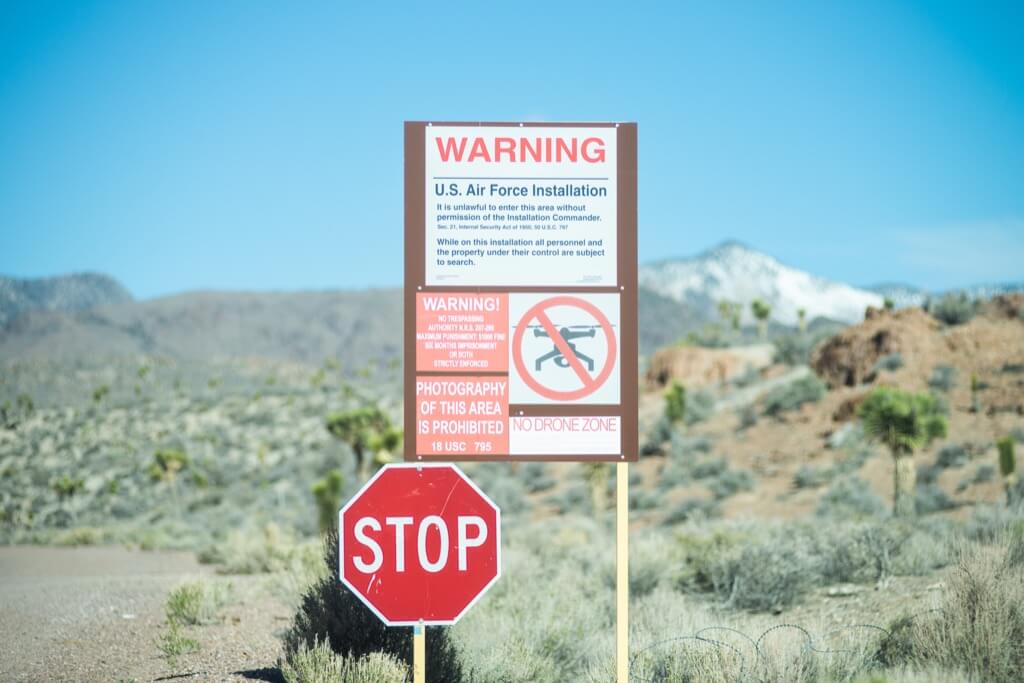In today’s digital age, “Area 51” evokes more thoughts of extraterrestrial beings than covert military operations. But what is the origin of this association? Let’s delve deeper into this captivating enigma.
A Brief Primer on Area 51
Area 51, as the US government officially recognizes, serves as a hub for military equipment testing. Historical archives tie this location to the evaluation of iconic aircraft like the SR-71 Blackbird and Lockheed U-2 Dragon Lady. The vast, flat terrains, which provide both secrecy and a suitable testing environment, were crucial in the establishment of Area 51.
Government’s Tight-Lipped Approach
The U.S. government’s penchant for secrecy around Area 51 only fanned the flames of public curiosity. While strict confidentiality was vital due to the site’s experimental ventures, occasional slip-ups occurred. Take the 1974 incident where Skylab astronauts captured images of “the airfield at Groom Lake,” despite prior instructions not to. As early as 1955, reports mentioned the facility, but it took until 1968 for a photograph to leak to the public.
Intriguing Insights from Area 51 Insiders
While pop culture often portrays Area 51 as a realm of eerie underground bunkers, insiders paint a different picture. James Noce, a long-time employee, shared fascinating snippets: employees being paid in cash, mysterious checks from unknown entities, and even camera confiscations after an Area 51 aircraft accident.
Area 51 and Aliens: Where’s the Connection?
Despite intriguing testimonies from officials, direct mentions of extraterrestrial beings remain elusive. This doesn’t dissuade conspiracy theorists, who frequently cite the Roswell incident as evidence. However, this seems to be a misdirected link. Roswell, despite its mention of a “Flying Saucer” in 1947, never tied the event to Area 51. The geographic distance between the two sites further weakens this claim.
The fusion of Area 51 with alien narratives seems to have roots in 1989, thanks to a Las Vegas TV appearance by Robert Lazar. Despite his claims of alien technology at the base, and his questionable background, his assertions quickly gained traction. Interestingly, the first mention of Area 51 on television came in 1987 via “UFO Cover-Up? : Live!”, a show based on potential UFO cover-ups. Still, the Roswell-Area 51 connection, revolving around extraterrestrial beings, was solely popularized on national TV.
The Evolution of Area 51’s Airspace
The airspace surrounding Area 51 has seen significant evolution since its inception. Initially, the facility’s operations were so secretive that there wasn’t a pressing need to bar civilian aircraft from the vicinity.
However, as speculations and awareness about the site grew, stricter regulations were imposed. Today, Area 51 has one of the most tightly guarded airspaces globally. This change not only underscores the site’s growing importance in defense and research but also the U.S. government’s determination to shield its ongoings from public scrutiny.
Mysteries of Papoose Lake: Area 51’s Less Known Neighbor
Adjacent to Area 51 lies the elusive Papoose Lake, another site enveloped in mystery. Unlike Area 51, which has been somewhat discussed in the public domain, Papoose Lake remains largely untouched by media attention. Some conspiracy theorists believe this site holds even more secrets than Area 51, with rumors suggesting underground bases and covert operations. However, the lack of concrete evidence makes Papoose Lake an even more intriguing subject.
Area 51 and Popular Culture
Area 51’s lore isn’t limited to conspiracy theorists and history buffs. The facility has deeply influenced popular culture, particularly the science fiction genre. From blockbuster movies to best-selling novels, Area 51’s rumored extraterrestrial connections have been a goldmine for creatives. This impact has been so profound that even individuals with no interest in conspiracy theories can recount tales of Area 51, illustrating the facility’s entrenched position in modern folklore.
Alternative Theories
While aliens and UFOs dominate Area 51 narratives, various alternative theories circulate in lesser-known circles. Some believe the facility is a hub for developing futuristic energy sources or even time travel research. Others think it’s a meeting ground for secret societies that pull the world’s strings behind closed doors. While these alternative theories may lack substantial evidence, they emphasize the site’s allure and humanity’s innate desire to decode the unknown.
Eyewitness Accounts
While few have ever set foot inside Area 51, many have ventured close to its perimeter, hoping to catch a glimpse of something extraordinary. These enthusiasts, armed with binoculars and cameras, often share accounts of unexplained phenomena: strange lights, eerie sounds, and unidentified flying objects. While skeptics might attribute these observations to natural phenomena or military operations, these tales add another layer to Area 51’s rich tapestry of mysteries.
The Global Fascination with UFOs: South Africa’s Rosmead Incident
Much like Area 51 has captured the imagination of many Americans, South Africa has had its share of UFO sightings and mysteries. One of the most notable is the Rosmead Incident of 1972. In this case, various witnesses reported seeing a saucer-shaped object landing and then taking off again near the town of Rosmead. Local farmers even claimed to find a circular patch of scorched earth where the object supposedly landed. However, no concrete evidence was found, and the incident was largely chalked up to a combination of atmospheric phenomena and heightened Cold War tensions leading to increased UFO reports worldwide.
Media’s Role in UFO Tales
The role of media in propagating UFO myths can’t be understated. South African television, like its counterparts globally, has showcased documentaries, interviews, and fictional accounts related to UFOs.
This exposure, while entertaining, often blurs the lines between fact and fiction for viewers. It’s essential to remember that while these stories might draw on real-life events, creative liberties are frequently taken to enhance the narrative. This portrayal can inadvertently solidify the belief in extraterrestrial activities even in the absence of concrete evidence.
South African Skepticism
South Africans, like many global citizens, have a healthy skepticism when it comes to UFO sightings. Various universities and scientific communities in the country have made efforts to study and debunk claims of extraterrestrial encounters.
Utilizing meteorological data, atmospheric studies, and knowledge of man-made aircraft operations, many supposed UFO sightings have logical explanations, ranging from weather balloons to satellite reflections or even just regular aircraft operations.
Johannesburg’s Flying Saucer Mania
In the late 20th century, Johannesburg saw a rise in reported UFO sightings. Many of these reports came from reliable sources, including pilots, police officers, and even military personnel. Local newspapers and radio stations fueled the frenzy, sharing personal accounts and eyewitness testimonies.
While many of these reports remain unexplained, it’s worth noting that the sheer volume of sightings in a concentrated area suggests societal influences, heightened awareness, and even potential misinterpretations of natural or man-made phenomena.
The Importance of Open Dialogue
For South Africans and people worldwide, open dialogue about UFOs and extraterrestrial life is crucial. While it’s easy to get lost in the allure of mysteries like Area 51 or the Rosmead Incident, it’s essential to approach such topics with a balanced view. Engaging in conversations, attending seminars, or even joining UFO enthusiast groups can offer insights and different perspectives, allowing individuals to form a more informed opinion on the subject.
In the grand tale of Area 51, it’s crucial for the discerning reader to differentiate between documented facts and seductive fictions.




